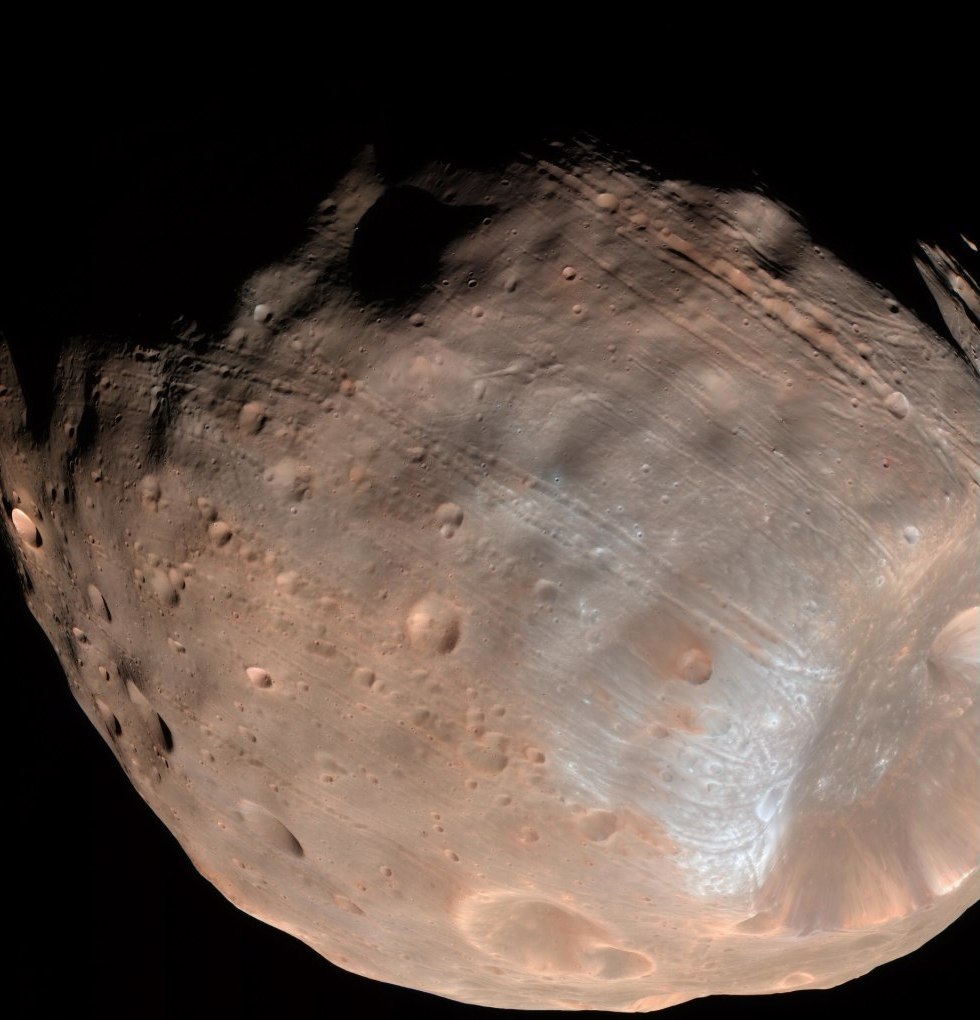Stretch marks spell trouble for moon as Mars pulls it slowly to its doom
Mars’ largest moon has begun to fall apart. Phobos is already scarred by 12 mile “stretch marks” formed by stresses caused by the gravitational pull from the Red Planet. And the moon, which orbits just 3,700 miles (6,000km) above Mars, will be completely pulled apart sometime in the next 30-50 million years, say experts at Nasa.
We think that Phobos has already started to fail, and the first sign of this failure is the production of these grooves.
Terry Hurford, Nasa
At first, scientists first thought the 100m to 200m-wide grooves streaking along Phobos’ oddly shaped surface were fractures caused by an impact which formed its Stickney crater. But fresh analysis has established they are caused by the gravitational pull of Mars. It suggests Phobos may be no more than a fragile pile of rubble held together by a layer of dust, soil and broken rock just 100m thick. Neptune’s moon Triton, which has a similarly fractured surface and is slowly falling towards the planet, is thought to be resigned to the same fate.

Science mars moon